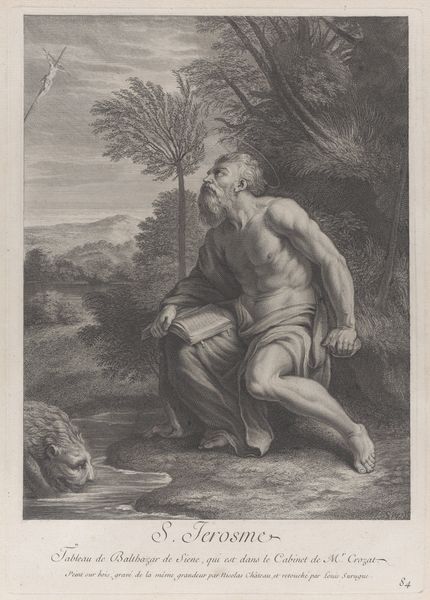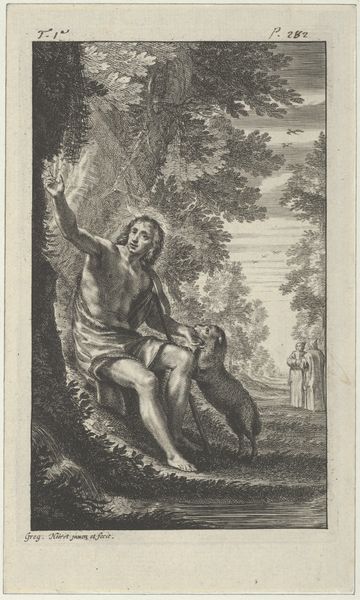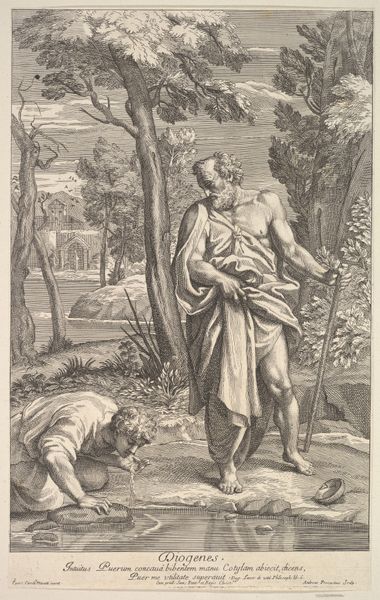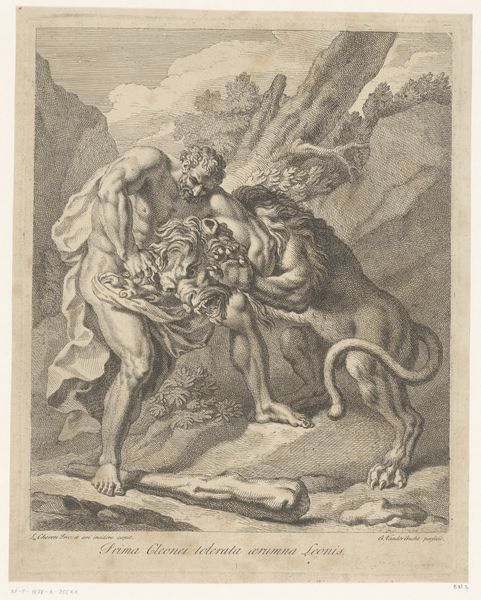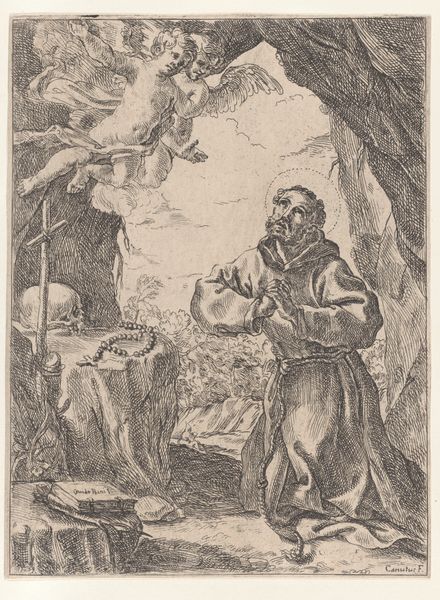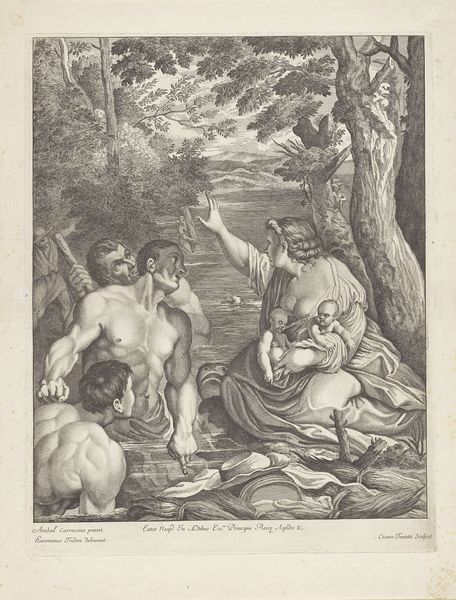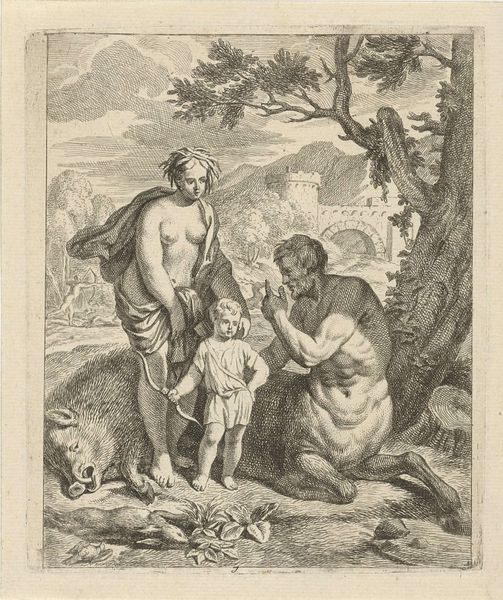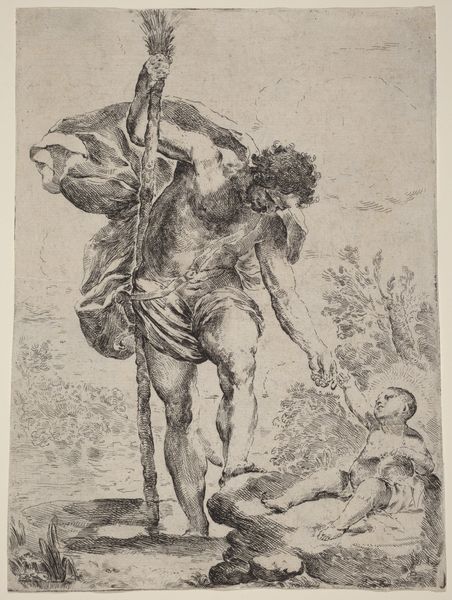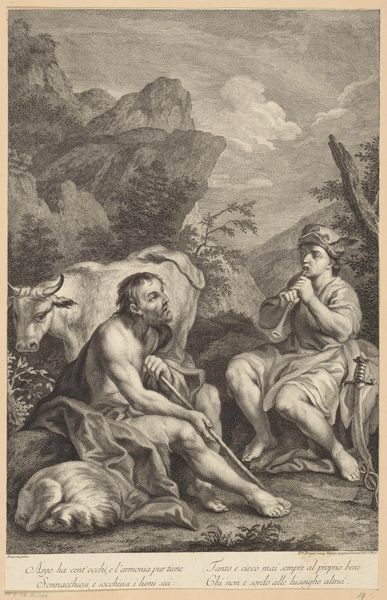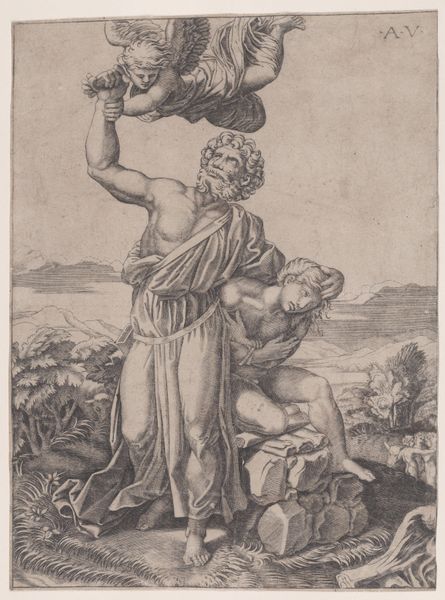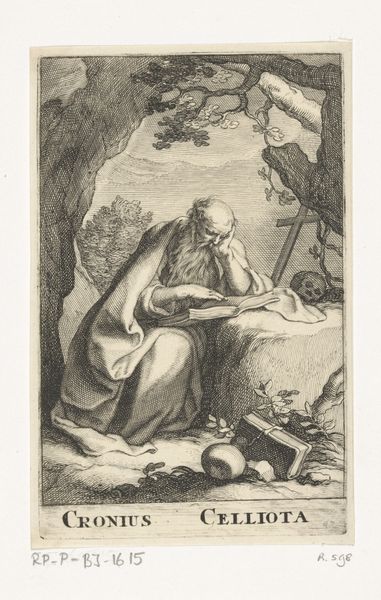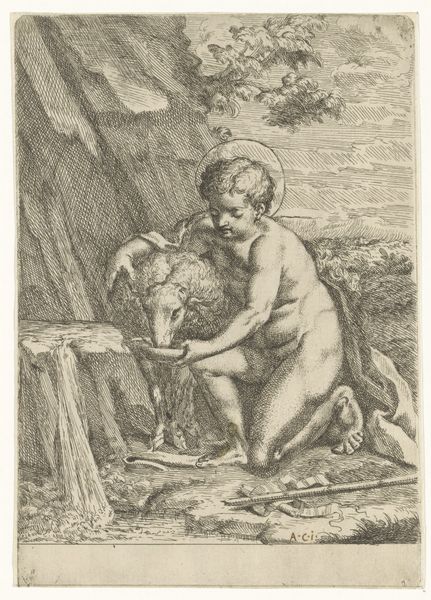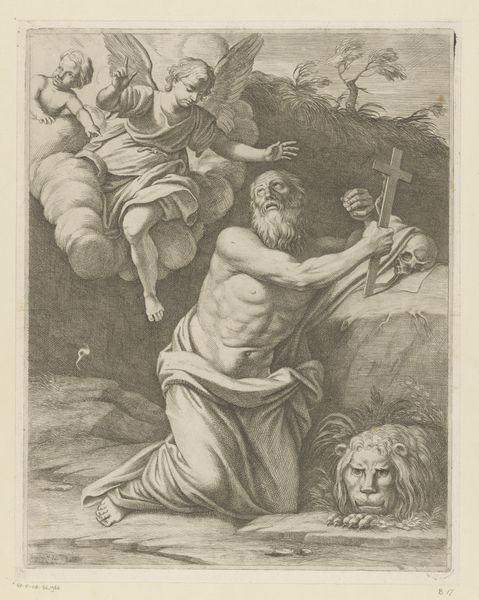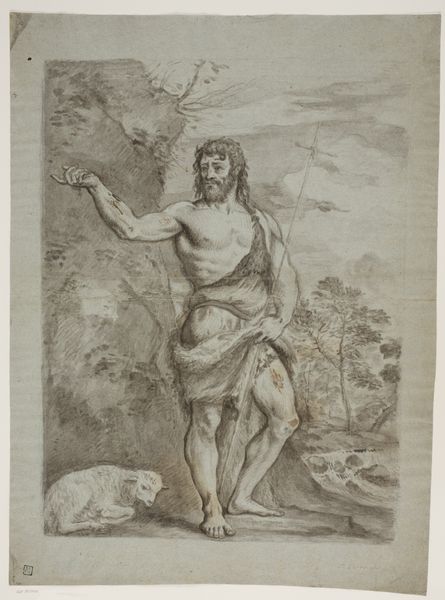
print, engraving
#
baroque
# print
#
landscape
#
figuration
#
engraving
Dimensions: height 227 mm, width 167 mm
Copyright: Rijks Museum: Open Domain
Editor: This is "H. Johannes de Doper haalt water uit een bron," or "St. John the Baptist drawing water from a spring," by Jan van Troyen, made around 1658-1660. It's an engraving, giving it a really distinctive look. I'm struck by how intimate the scene feels, despite being a religious subject. What do you see in this piece? Curator: This engraving offers us an opportunity to explore the complex relationship between religious iconography and social realities of 17th-century Netherlands. We see John the Baptist not as an ethereal figure, but grounded, actively engaging with his environment, emphasizing the potential for a lived faith that resonates with ordinary existence. Editor: Interesting! I hadn't really considered it in that context. How does the medium, the print itself, contribute to this reading? Curator: Prints were a readily accessible medium during this time. By depicting John the Baptist in this format, van Troyen democratized his image. It moved beyond the elite sphere of commissioned paintings to become accessible to a broader public, fostering wider interpretation and dialogue around faith and identity. How does the presence of the lamb shift your understanding? Editor: I guess it adds a layer of symbolism beyond just the immediate narrative. Maybe relating him to Jesus? Curator: Exactly. And what does it say, placing such figures in conversation within an ordinary setting? It can challenge the accepted social-religious norms, placing new meanings on cultural values and acceptable social interactions. Editor: So, this piece really reflects and questions societal structures of its time, more than I initially thought! Curator: Absolutely. It is a work of art that continues to speak about societal narratives through the language of faith, identity, and accessibility, if we let it.
Comments
No comments
Be the first to comment and join the conversation on the ultimate creative platform.
